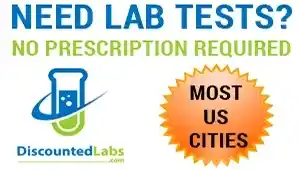You should upgrade or use an alternative browser.
An overview of leading pathophysiologic theories in BPH - Androgens and estrogens
- Thread starter madman
- Start date
DadOfSonNOVA
Member
LibraTeacher
New Member
Castration elicited only a partial reduction in prostate volume, relative to castration-induced regression of the normal prostate gland.This is over my head so I apologize in advance if I’m way off however does this study suggest castration would shrink prostrate?
madman
Super Moderator
This is over my head so I apologize in advance if I’m way off however does this study suggest castration would shrink prostrate?
Androgen is required to prevent atrophy of the gland.
*Normal prostate glands undergo atrophy when serum androgens are greatly reduced via castration or administration of LHRH agonists
Testosterone and Prostate Cancer
It is widely recognized that the presence of adequate serum levels of testosterone is necessary for the development of the prostate. Testosterone (T) can act directly on androgen receptors to exert their action or can be converted by 5-alpha-reductase into dihydrotestosterone (DHT) or to estradiol by the aromatase enzyme complex [1].
There are several reasons why it appears logical to believe that testosterone therapy may stimulate prostate cancer. The prostate does not develop properly without androgen stimulation. Normal prostate glands undergo atrophy when serum androgens are greatly reduced via castration or administration of LHRH agonists. Furthermore, most prostate cancers are dependent on androgens in the early stages of progression and demonstrate regression with androgen ablation. Consequently, the presence of excessive androgenic stimulation as an etiologic factor in prostate carcinogenesis appears logical [1–5].
However, a number of studies have suggested that testosterone administration in supraphysiological doses to healthy men did not result in a significant increase in prostate-specific antigen (PSA), nor prostate volume or urinary symptoms [6, 7].PSA also does not seem to be influenced by the circadian rhythm of testosterone levels [8].
A variety of studies in PCa, including experiments in animals, cell lines, and humans, indicate that prostate tissue (benign or malignant) responds quickly and vigorously to the addition of testosterone when it is in an androgen-deprived state. However, at higher concentrations, prostate tissue becomes unresponsive to this hormone [9].
ExcelMale Newsletter Signup
Stay Informed with Our Newsletter
Get the latest men's health insights, expert advice, and community updates delivered to your inbox.
Similar threads
- Replies
- 18
- Views
- 301
- Replies
- 12
- Views
- 442
- Replies
- 6
- Views
- 1K
- Replies
- 16
- Views
- 844
TRT Hormone Predictor
Predict estradiol, DHT, and free testosterone levels based on total testosterone
⚠️ Medical Disclaimer
This tool provides predictions based on statistical models and should NOT replace professional medical advice. Always consult with your healthcare provider before making any changes to your TRT protocol.
ℹ️ Input Parameters
Predicted Hormone Levels
Enter your total testosterone value to see predictions
Results will appear here after calculation
Understanding Your Hormones
Estradiol (E2)
A form of estrogen produced from testosterone. Important for bone health, mood, and libido. Too high can cause side effects; too low can affect well-being.
DHT
Dihydrotestosterone is a potent androgen derived from testosterone. Affects hair growth, prostate health, and masculinization effects.
Free Testosterone
The biologically active form of testosterone not bound to proteins. Directly available for cellular uptake and biological effects.
Scientific Reference
Lakshman KM, Kaplan B, Travison TG, Basaria S, Knapp PE, Singh AB, LaValley MP, Mazer NA, Bhasin S. The effects of injected testosterone dose and age on the conversion of testosterone to estradiol and dihydrotestosterone in young and older men. J Clin Endocrinol Metab. 2010 Aug;95(8):3955-64.
DOI: 10.1210/jc.2010-0102 | PMID: 20534765 | PMCID: PMC2913038
Online statistics
- Members online
- 4
- Guests online
- 205
- Total visitors
- 209
Latest posts
-
-
-
-
Nelson Vergel 's Testosterone plus HCG Protocol
- Latest: Fernando Almaguer
-
High Testosterone Levels: Impact on the Heart
- Latest: Fernando Almaguer
-
-












